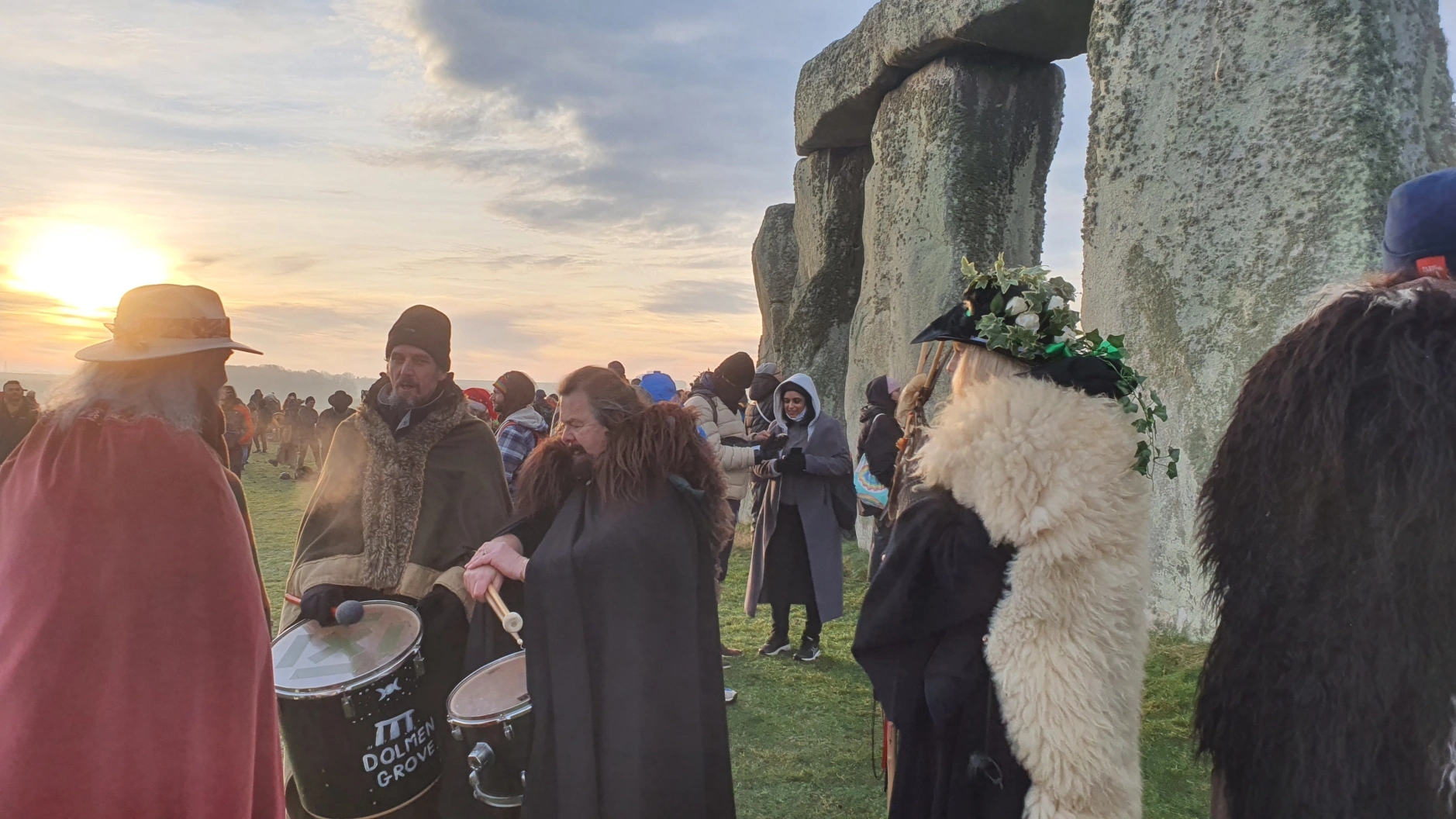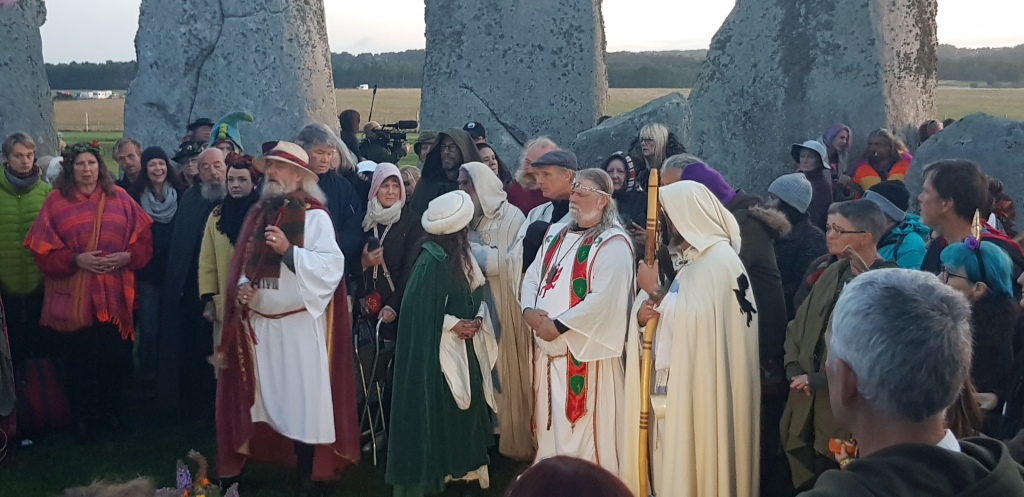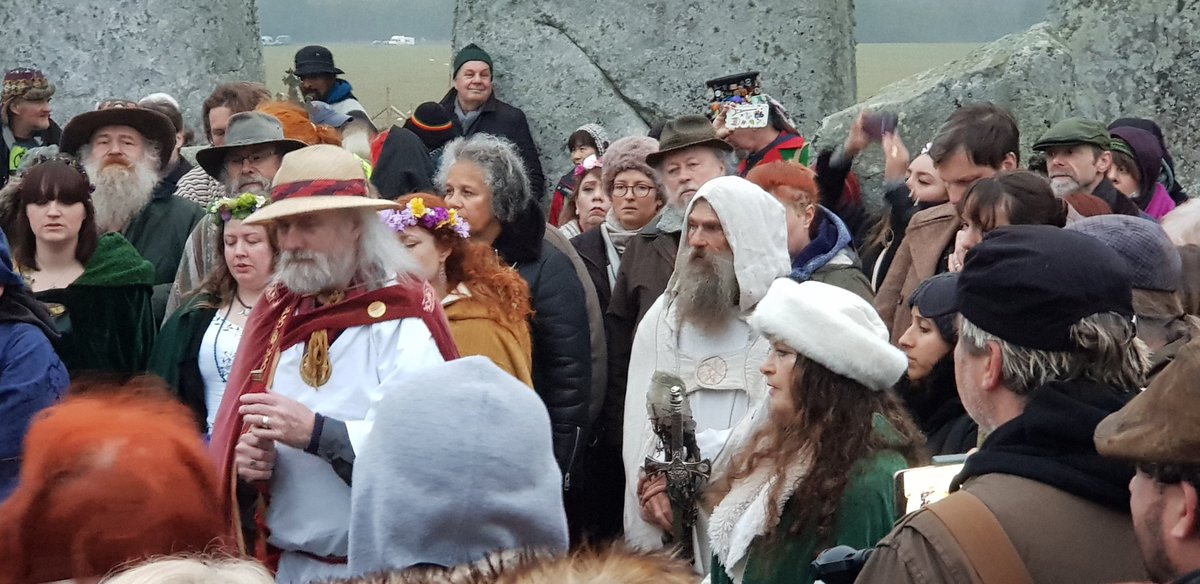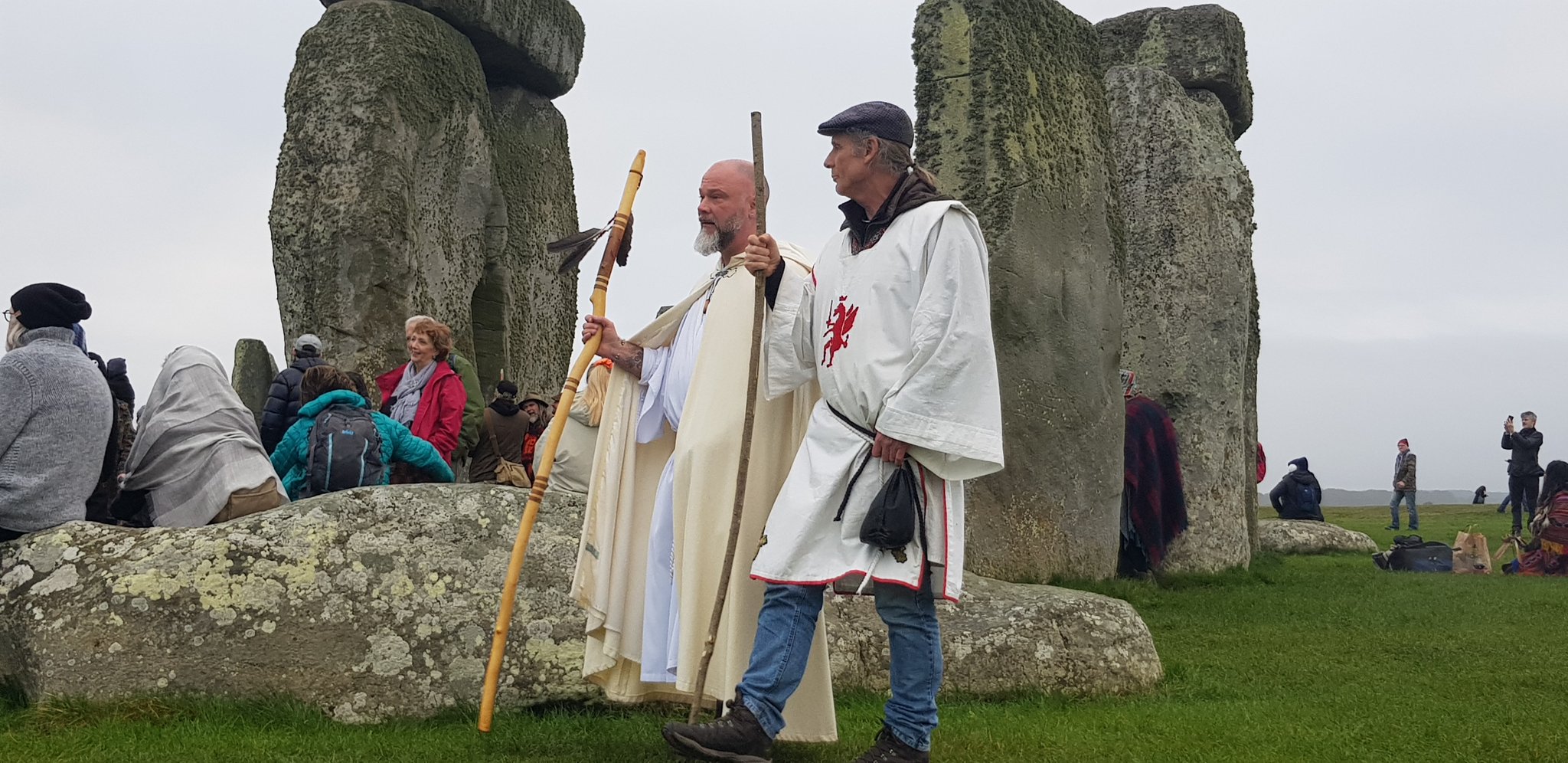Winter Solstice at Stonehenge will take place on Thursday 22nd December 2022. English Heritage are expected to offer a short period of access, from first light or safe enough to enter the monument field (approximately 07.45am until 10.00am)






At Winter Solstice, access to the stones themselves is free and without restriction, and visitors can get up close with the marvel that is Stonehenge. After it passes, the days will begin to get longer and longer until June when the Summer Solstice takes place.
The Winter Solstice, marking the shortest day and longest night of the year approaches, drawing neo-druid and neo-pagan pilgrims to Stonehenge to watch the sunrise through the sacred site.
This is a twice-yearly pilgrimage for many visitors, including Druids and Pagans, with the Summer Solstice in June being the largest of the two events. The festivals which have celebrated the passing of the seasons and new beginnings throughout human history, offer a unique opportunity to visit Stonehenge with no barriers and draws crowds every year.
Whatever the weather, it could be cold and wet. So please dress accordingly. Shuttle buses will be running to take you from the car parks to the stones. However, you may choose to walk from the Visitor Centre up to the stones. This takes 30 minutes on average and will be in low-light. So a torch would be essential.
Why is open access on the 22nd December?
Many people believe the Winter Solstice always falls on December 21, but because of a mismatch between the calendar and solar year, the December solstice is not fixed to a specific date.
This year, English Heritage says based on advice from the druid and pagan communities, the Solstice will be marked at Stonehenge on the morning of Thursday December 22 December – the first sunrise following the astronomical solstice which occurs after sunset the previous day.
Access to Stonehenge for Winter Solstice is is subject to the Conditions of Entry. Please read these before deciding whether to attend. Stonehenge is in a field on Salisbury Plain and the weather in December will be cold and wet. Even if it isn’t raining, the ground will be wet from the dew and there may also be frost. Sensible footwear and warm, waterproof clothing is essential. Please note, parking charges apply.
Can I watch the sunrise on a live stream?
English Heritage will be live streaming the sunrise on the morning of 22 December for free on their digital channels. Visit the official Stonehenge or English Heritage Facebook page, or the English Heritage YouTube channel. Please beware of fake/scam Facebook pages, events and groups that might have been set up.
Getting there:
Extremely limited parking available and strongly recommend using public transport to avoid disappointment. Salisbury Reds are operating a dedicated Solstice service from Salisbury train station via Amesbury. Please check their website for details. We also have a dedicated car sharing website which is available here.
Limited parking is available in the Winter Solstice car parks, which will open at 6am on the 22nd December 2022. Please follow the brown tourist route signage to Stonehenge. There will be signs to direct you to the car parks. Please do not arrive early as there is no waiting on roads in the area and you will be moved on.
There will be a parking charge for all vehicles in the official car parks for Winter Solstice 2022 – £5 for cars and minibuses up to 16 seats and £2 for motorbikes. This can be paid by cash or card.
If you are considering visiting Stonehenge for the Winter Solstice celebrations and do not have tour own transport, you may want to consider joining an organised tour with transport from London, Bath or Salisbury and save all the hassle and expense. Stonehenge Guided Tours offer such tours and are the longest established company. Solstice Events offer small group tours from Bath and The Stonehenge Tour Company use only local expert guides and have a great reputation.
Stonehenge Winter Solstice Links:
Winter Solstice at Stonehenge 2022: Everything you need to know – WILTSHIRE LIVE
Stonehenge Winter Solstice Tours from London – STONEHENGE GUIDED TOURS
English Heritage Conditions of Entry – ENGLISH HERITAGE
When is the shortest day of the year — date of winter solstice and what it means – DAILY MIRROR
The Rebirth of the Sun: the Winter Solstice at Stonehenge – STONEHENGE NEWS BLOG
Winter Solstice: Wild tales of slaughtered bulls, human sacrifice and much merriment – THE SCOTSMAN
The Rebirth of the Sun: the Winter Solstice at Stonehenge – STONEHENGE NEWS BLOG
Winter solstice: Why do pagans celebrate the shortest day of the year? THE TELEGRAPH
The Sun Stones: The Story of the Winter Solstice at Stonehenge – STONEHENGE NEWS BLOG
Solstice at Stonehenge. From Past to Present. – STONEHENGE NEWS BLOG
What has Stonehenge got to do with the winter solstice? – METRO NEWS
Stonehenge Winter Solstice Tours from Bath – SOLSTICE TOURS U.K
Celebrate Winter Solstice at Stonehenge – HOLIDAY EXTRAS
Solstice and Equinox Experience Tours – SOLSTICE EVENTS UK
The Stonehenge Solstice Pilgrims – STONEHENGE NEWS BLOG
Stonehenge, the Winter Solstice, and the Druids – INTERESTRING ENGINEERING
Respecting the Stones. Managed Open Access –STONEHENGE NEWS BLOG
The Stonehenge News Blog
Follow us on Twitter and Facebook for all the latest Stonehenge News and Winter Solstice updates.
















 From about 3pm on the 20th June, Stonehenge closes to regular visitors in order for preparations to begin for the largest mass pilgrimage to a solar temple in modern times.
From about 3pm on the 20th June, Stonehenge closes to regular visitors in order for preparations to begin for the largest mass pilgrimage to a solar temple in modern times.















